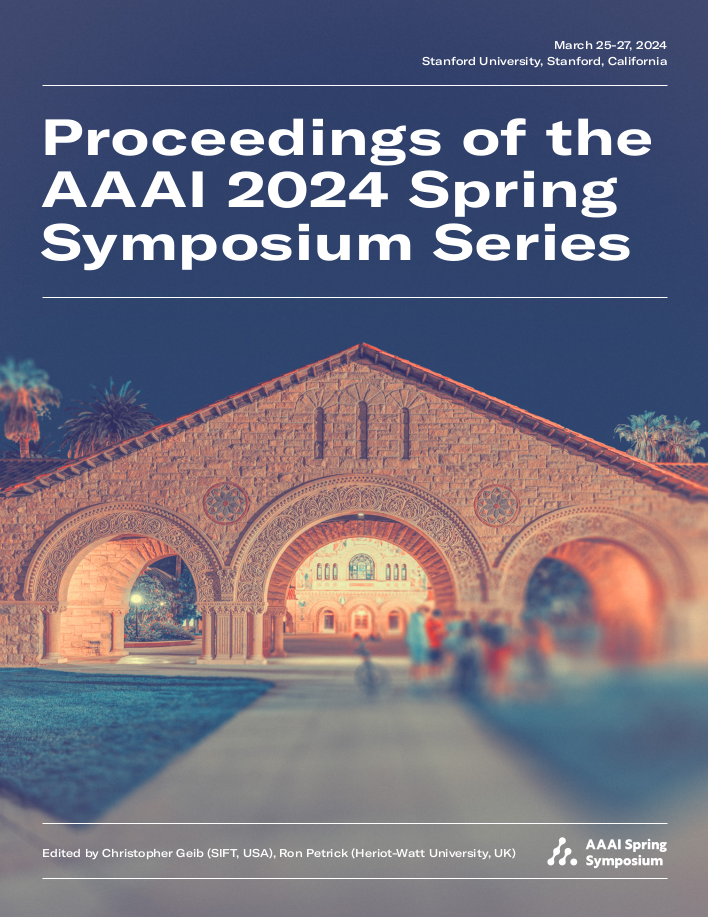Perception-Dominant Control Types for Human/Machine Systems
DOI:
https://doi.org/10.1609/aaaiss.v3i1.31177Keywords:
Human-Computer InteractionAbstract
We explore a novel approach to complex domain modelling by emphasising primitives based on perception. The usual approach either focuses on actors or cognition associated with tokens that convey information. In related research, we have examined using effects and/or outcomes as primitives, and influences as the generator of those outcomes via categoric functors. That approach (influences, effects) has advantages: it leverages what is known and supports the expanded logics we use, where we want to anticipate and engineer possible futures. But it has weaknesses when placed in a dynamic human-machine system where what is perceived or assumed matters more than what is known. The work reported here builds on previous advances in type specification and reasoning to ‘move the primitives forward’ more toward situation encounter and away from situation understanding. The goal is in the context of shared human-machine systems where: • reaction times are shorter than the traditional ingestion/comprehension/response loop can support; • situations that are too complex or dynamic for current comprehension by any means; • there simply is insufficient knowledge about governing situations for the comprehension model to support action; and/or, • the many machine/human and system/system interfaces that are incapable of conveying the needed insights; that is, the communication channels choke the information or influence flows. While the approach is motivated by the above unfriendly conditions, we expect significant benefits. We will explore these but engineer toward a federated decision paradigm where decisions by local human, machine or synthesis are not whole-situation-aware, but that collectively ‘swarm’ locally across the larger system to be more effective, ‘wiser’ than a convention paradigm may produce. The supposed implementation strategy will be through extending an existing ‘playbooks as code’ project whose goals are to advise on local action by modelling and gaming complex system dynamics. A sponsoring context is ‘grey zone’ competition that avoids armed conflict, but that can segue to a mixed system course of action advisory. The general context is a costly ‘blue swan’ risk in large commercial and government enterprises. The method will focus on patterns and relationships in synthetic categories used to model type transitions within topological models of system influence. One may say this is applied intuitionistic type theory, following mechanisms generally described by synthetic differential geometry. In this context, the motivating supposition of this study is that information-carrying influence channels are best modelled in our challenging domain as perceived types rather than understood types.Downloads
Published
2024-05-20
Issue
Section
Bi-directionality in Human-AI Collaborative Systems

